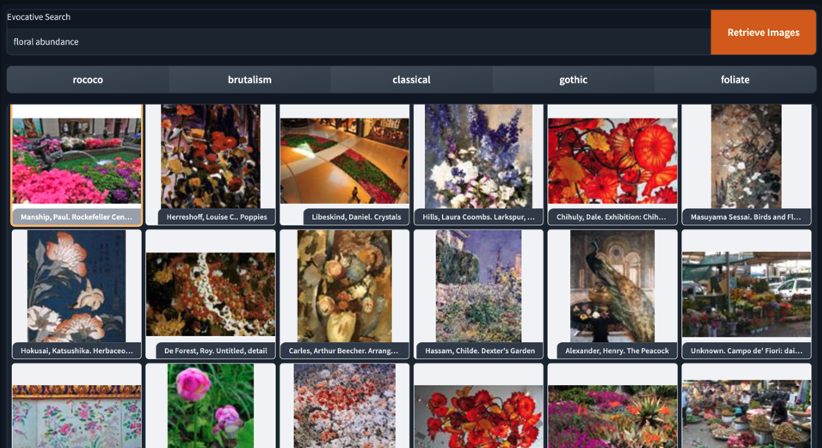Cultural heritage institutions can offer trustworthy information, something that commercial AI systems lack – Interview with dr. Ines Vodopivec
Dr. Ines Vodopivec is Secretary General of AI4LAM, a collaborative framework for libraries, archives and museums to organise, share and elevate their knowledge on the use of artificial intelligence. Previously, she was Deputy Director of the National and University Library of Slovenia. She is also a member of the Management Board of the Europeana Network Association, which has more than 5,000 stakeholders engaged in providing, reusing, educating, and building impact through digital cultural heritage in the common European data space for cultural heritage. She has been working at the intersection of cultural heritage and digital transformation since 2009.
In this short interview, we talked about the “digital” in digital humanities, her role in the Centre of Excellence in AI and Digital Humanities (CoE AI4DH) and how we can use AI for humanities research, as well as current trends and the future of her field of expertise.
How would you describe digital humanities to someone who has never heard of it?
There are ongoing discussions about dropping the word digital from digital humanities, as research in the humanities today is nearly impossible without digital infrastructure and tools. All cultural institutions now provide data in digital formats, and without such data, conducting research has become increasingly difficult.
However, I always tell my students that even if digitised cultural heritage data is available, they should still go out and examine the real objects and look at the material itself in the physical world. Otherwise, you end up researching something you’ve never actually seen in real life.
This is exactly what I did in my own research. I studied the collection of the Franciscan Monastery in Novo Mesto, and the one in our national collection. I held 3,956 books in my hands. It was an incredible experience. Only after I had become thoroughly familiar with the material did I initiate the digitisation process.
Digitisation allows you to work even at night, when the library is closed. That’s one of the greatest advantages of digital humanities, your research is no longer tied to a specific place or time. But that should come after you’ve become familiar with the material in the real, analogue world, not just in its digital twin.
What is your role within the Centre of excellence in artificial intelligence in digital humanities (AI4DH)?
I am a member of the advisory board, and I’m particularly interested in how we can strategically develop the Centre, both within the broader European context and through collaboration with other networks like AI4LAM – Artificial Intelligence for Libraries, Archives, and Museums. I’m focused on how we can work together to advance research in digital humanities and drive the field forward.

Do you have any specific examples of how artificial intelligence can be used for the digital humanities?
One of the most interesting projects I’ve come across recently comes from the National Library of Norway. They undertook the mass digitisation of newspapers. Not just a single year, collection or issue, but everything. A huge amount of scans were created without marking the first and last pages of each newspaper. They used a human-in-the-loop approach, where people tried to identify the first pages. However, the amount of material was simply too large for manual processing. Therefore they developed an AI tool that was able to automatically detect the first pages of the newspapers. This enabled them to automate and accelerate the whole process.
Another good example is the use of a chatbot in the Digital Library of Luxembourg. They have implemented a system similar to ChatGPT, but it is limited to searching within the digital library. This means that it does not hallucinate answers as it only returns information based on verified materials from the collection. Each result is cited and linked to the original source, and the full reference is displayed along with the chatbot’s abstract as response. A third example comes from the Stanford University Library where they use AI for improving accessibility for digital image collections. An AI tool can recognise not only typical visual elements such as flowers or men on horseback, but also artistic styles and moods. For example, it can identify and even interpret the emotional tone of a picture.

“Cultural heritage institutions can offer trustworthy, verified information, something that commercial AI systems lack. By providing accurate and credible results, we have the chance to reposition cultural heritage institutions as relevant parts of society once again.”
What are the current trends and hot topics in your field?
AI is now being integrated into every aspect of cultural heritage institutions. For example, it is being used in internal workflows to speed up the creation of metadata and is also being used in areas such as cybersecurity of cultural heritage institutions.
We are witnessing a profound societal transformation. Twenty years ago there was concern that young people were no longer visiting libraries, today older users are also turning to AI and cultural heritage institutions are being left behind by all age groups.
However, AI also offers a great opportunity. Cultural heritage institutions can offer trustworthy, verified information, something that commercial AI systems lack. By providing accurate and credible results, we have the chance to reposition cultural heritage institutions as relevant parts of society once again.
What are your plans for the future?
I represent a large global network and one of my main goals is to help bring it together. At the moment, many members work individually, but we need to work more closely together. Sharing knowledge leads to better insights, and building stronger connections within the network is the strategic direction I want to pursue. As we say at AI4LAM: individually we are slow and isolated; collectively we can go faster and farther.
With the establishment of the Centre of Excellence for AI and Digital Humanities (CoE AI4DH) in Ljubljana, I have been considering enrolling in one of the newly developed PhD programs in AI once they receive accreditation. Pursuing a second PhD would allow me to bridge knowledge and interdisciplinary content, creating a more comprehensive perspective. It’s an ambitious personal goal, but why not? Life is too short to achieve too little along the way.